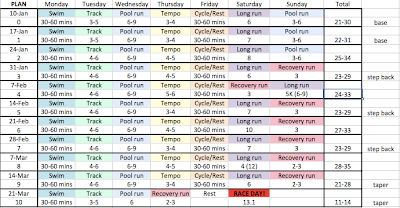

You can instantly see the huge variation in cadence range and with it, a lot of versatility in riding capability. Being a one-speed rider makes you very limited in the kind of efforts you can execute, leaving you at the mercy of cyclists with better leg speed skills than yourself.Ĭompare that to a ride where you're riding at a lot of different cadence ranges. Their legs never change speed and they pedal the same all the time. If you see a lot of points all clustered around a single point on the X axis, you're risking becoming a “one-speed rider.” This is the kind of rider that looks like a duck in water. Take a look at the workouts on the quadrant analysis graphs to the right. Climbing, descending and rolling fast on the flats can give you fits if you're leg speed is not up to par. But there are other times when being able to vary your cadence is important. You'll generally default to this cadence in most circumstances. This is going to be the point at which you feel the most comfortable riding. The big thing you'll find is what your “preferred cadence” is. You can analyze your workouts for cadence distribution to figure out a few different things. As I noted above, half of the equation for power is velocity, so how fast you turn the pedals is critical to developing power. Turning the pedals seems to be very simple, but cadence plays a vital role in power production. I've talked a lot about the importance of cadence in the past. 1: Analyze for cadence ranges and expand them The quadrant analysis plot will also show you holes in your fitness below that power curve and allow you to adapt your training to fill in those weak spots. You'll be able to see if you spent a lot of time above your functional threshold power or if most of your efforts were below threshold. There is also a downward sloping curve that represents your functional threshold power (or Critical Power in Golden Cheetah) at different cadence and force distributions.
GOLDENCHEETAH TRAINING PLAN SOFTWARE
Thankfully, your software will do all this for you. Power is simply a product of force times velocity, so by selecting a point on the x axis and a point on the y axis, you can find the power produced by calculating the product. This is expressed in newtons of force applied to the pedal. On the Y axis is a force distribution plot. This is expressed as “circumferential pedal velocity” in meters per second. On the X axis, you'll find a cadence distribution. Learning to read the quadrant analysis plot is not as difficult as it may seem at first. Learning to read the Quadrant Analysis plot


Once you get it, it becomes a powerful tool in the arsenal of helping you understand your fitness.Ĭheck out these tips to help you get the most out of your quadrant analysis plot and make your training more effective.
GOLDENCHEETAH TRAINING PLAN HOW TO
It doesn't come easy though: it takes some time to understand the QA plot and how to use it. Then you can look at your training data and see if it matches up with your goal races and performance data. It allows you to see a snapshot of what kinds of efforts went into your performance. Above and beyond functional threshold power, watts per kilogram and training stress score, the quadrant analysis is probably one of the most valuable charts you can find. Learning how to read a quadrant analysis plot can teach you a lot about your training, racing and riding. Programs like Golden Cheetah, Training Peaks and WKO+ offer quadrant analysis features. Quadrant analysis is a tool that can be found in many power analysis software packages.


 0 kommentar(er)
0 kommentar(er)
